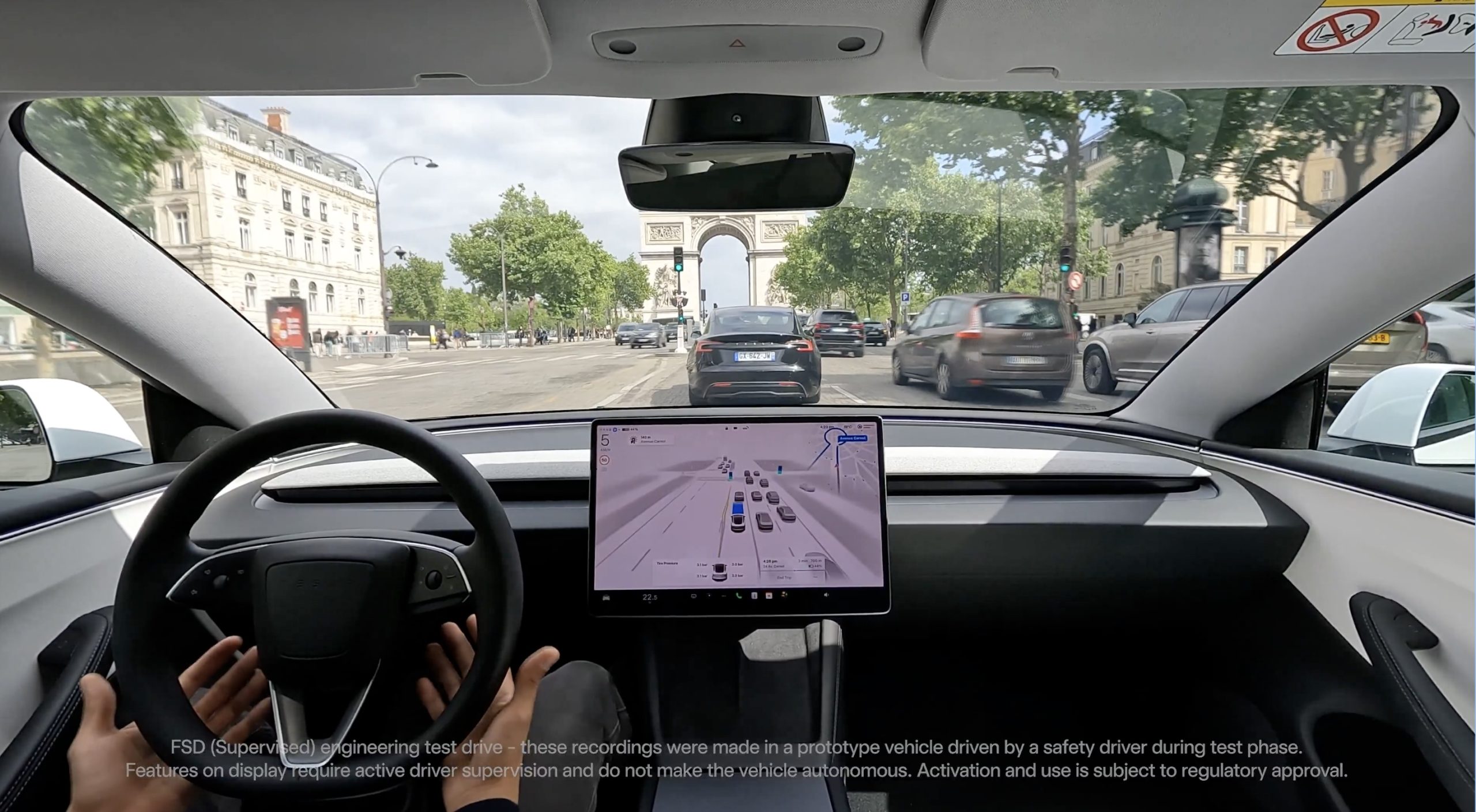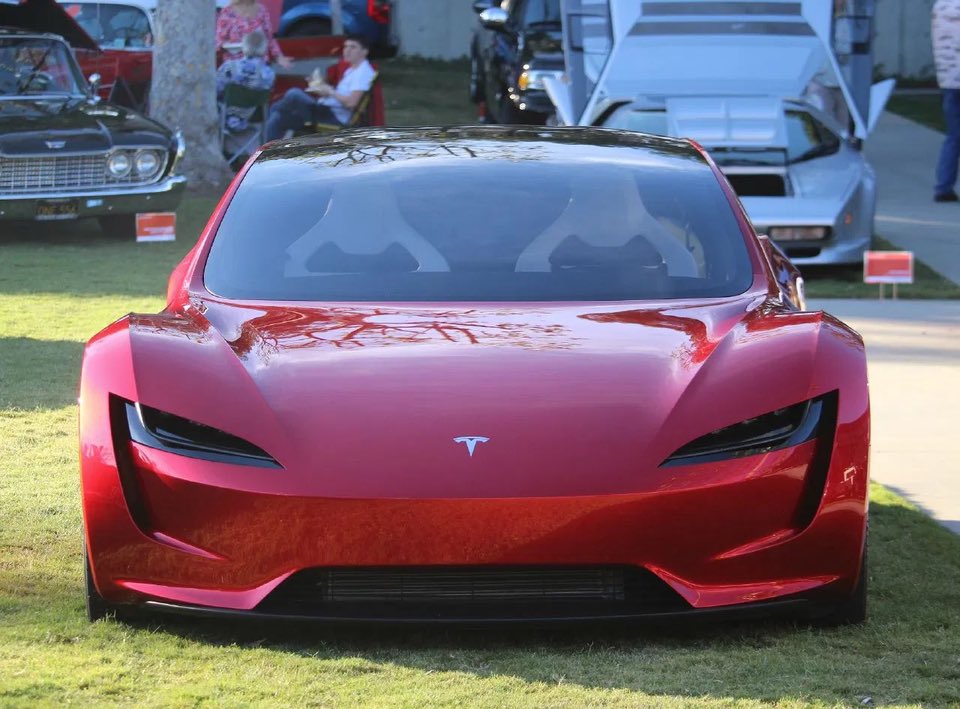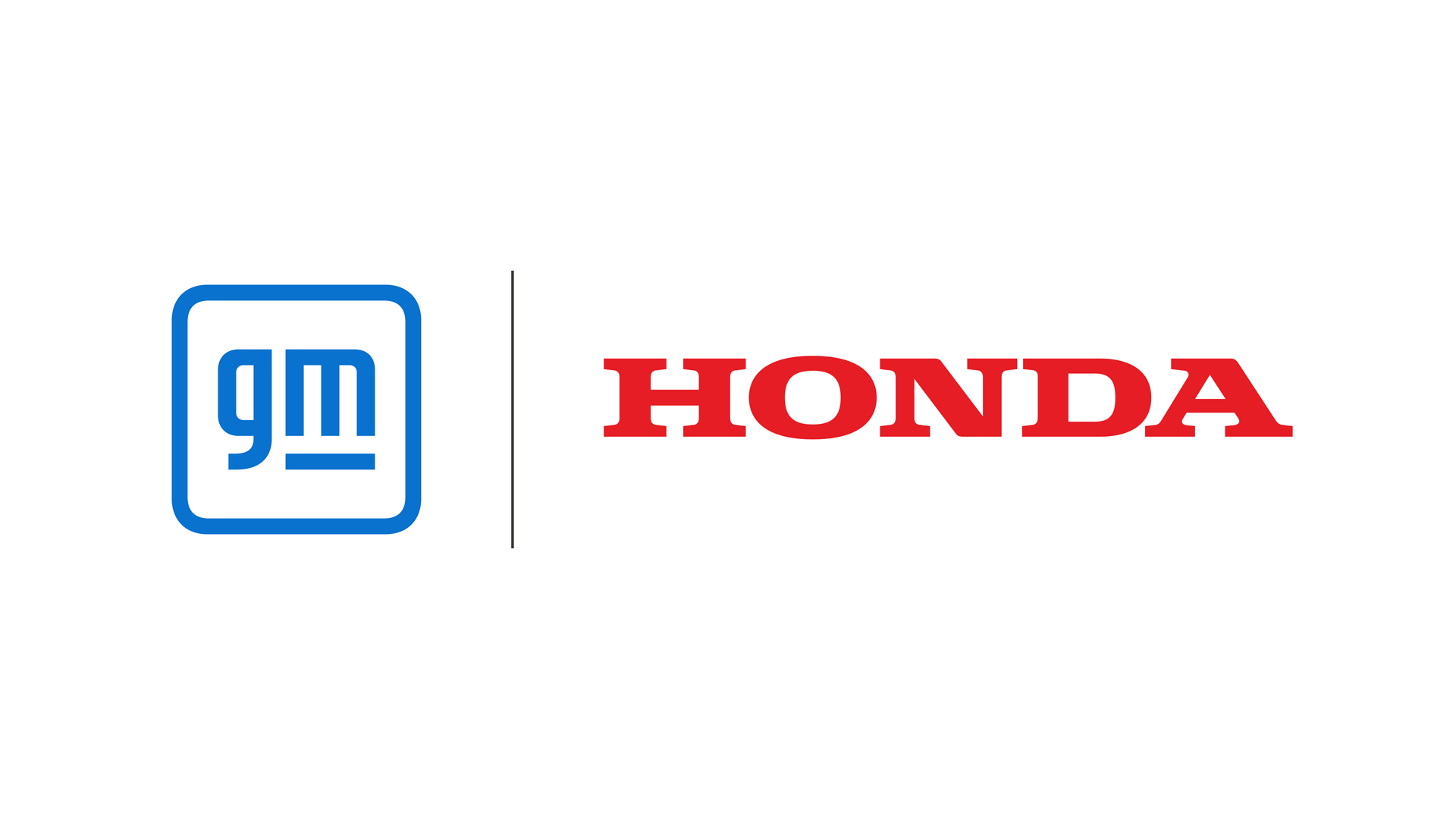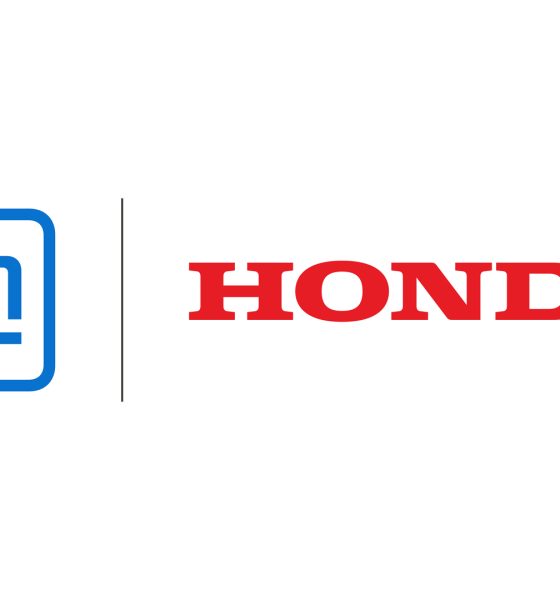General Motors and Honda have announced a new partnership to develop affordable electric vehicles based on a global platform.
“GM and Honda will share our best technology, design, and manufacturing strategies to deliver affordable and desirable EVs on a global scale, including our key markets in North America, South America, and China,” Mary Barra, GM’s CEO and Chair said in a statement. “This is a key step to deliver on our commitment to achieve carbon neutrality in our global products and operations by 2040 and eliminate tailpipe emissions from light-duty vehicles in the U.S. by 2035. By working together, we’ll put people all over the world into EVs faster than either company could achieve on its own.”
Vehicles developed by the Detroit and Japan-based companies will run on GM’s Ultium battery technology, which the automaker developed for its massive transition to EVs. By 2027, GM and Honda plan to launch low-priced and affordable electric options, including compact crossover vehicles, officials said.
GMC Hummer EV sports its massive size alongside full-size SUV
Electric vehicle affordability has been a hot topic, especially recently, as prices of even the most-affordable electric vehicles are skyrocketing due to inflation, parts shortages, and other reasons, like material availability or supply chain issues.
According to CNBC, the GM and Honda partnership is expected to bring vehicles priced at below $30,000, GM’s Executive VP of Electric Ken Morris said on Tuesday.
The partnership between GM and Honda could go past developing vehicles, with other opportunities possible down the road. The companies said they will discuss other “EV battery technology collaboration opportunities, to further drive down the cost of electrification, improve performance and drive sustainability for future vehicles.” The companies already have worked together with EVs and autonomy. Honda invested $750 million in the majority-GM-owned Cruise. GM also produced two EVs for Honda that will be released in 2024.
GM and Honda are adopting similar strategies for their EV transition projects. Both companies are developing batteries for their projects, including solid-state batteries with greater range and lightweight. These cells can also withstand longer life cycles.
GM is still working to ramp its electric vehicle program. The automaker struggled in Q4 with EV sales, mainly due to the sidelined Chevrolet Bolt EV and EUV. However, GM is currently launching the GMC Hummer EV, which is proving to be a difficult process as only a handful of units have made their way to customers in the few months the vehicle has been in production.
Honda is developing in-house EV technology and plans to begin building electric cars after the GM-produced models are released in 2024.
“Honda is committed to reaching our goal of carbon neutrality on a global basis by 2050, which requires driving down the cost of electric vehicles to make EV ownership possible for the greatest number of customers,” Toshihiro Mibe, Honda’s president & CEO, said. “Honda and GM will build on our successful technology collaboration to help achieve a dramatic expansion in the sales of electric vehicles.”
I’d love to hear from you! If you have any comments, concerns, or questions, please email me at joey@teslarati.com. You can also reach me on Twitter @KlenderJoey, or if you have news tips, you can email us at tips@teslarati.com.

News
Tesla expands new Full Self-Driving program in Europe

Tesla expanded its new Full Self-Driving program, which gives people the opportunity to experience the company’s suite, in Europe.
Tesla recently launched an opportunity for Europeans to experience Full Self-Driving, not in their personal vehicles, but through a new ride-along program that initially launched in Italy, France, and Germany back in late November.
People could experience it by booking a reservation with a local Tesla showroom, but timeslots quickly filled up, making it difficult to keep up with demand. Tesla expanded the program and offered some additional times, but it also had its sights set on getting the program out to new markets.
It finally achieved that on December 9, as it launched rides in Denmark and Switzerland, adding the fourth and fifth countries to the program.
Tesla confirmed the arrival of the program to Denmark and Switzerland on X:
Now available in Denmark & Switzerland
🇩🇰 https://t.co/IpCSwHO566 https://t.co/V2N5EarLNX
— Tesla Europe & Middle East (@teslaeurope) December 9, 2025
The program, while a major contributor to Tesla’s butts in seats strategy, is truly another way for the company to leverage its fans in an effort to work through the regulatory hurdles it is facing in Europe.
Tesla has faced significant red tape in the region, and although it has tested the FSD suite and been able to launch this ride-along program, it is still having some tremendous issues convincing regulatory agencies to allow it to give it to customers.
CEO Elon Musk has worked with regulators, but admitted the process has been “insanely painful.”
The most recent development with FSD and its potential use in Europe dealt with the Dutch approval authority, known as the RDW.
Tesla says Europe could finally get FSD in 2026, and Dutch regulator RDW is key
Tesla said it believes some regulations are “outdated and rules-based,” which makes the suite ineligible for use in the European jurisdiction.
The RDW is working with Tesla to gain approval sometime early next year, but there are no guarantees. However, Tesla’s angle with the ride-along program seems to be that if it can push consumers to experience it and have a positive time, it should be easier for it to gain its footing across Europe with regulatory agencies.
News
Tesla ramps hiring for Roadster as latest unveiling approaches
Tesla published three new positions for the Roadster this week, relating to Battery Manufacturing, General Manufacturing, and Vision Engineering.

Tesla is ramping up hiring for positions related to the Roadster program, the company’s ultra-fast supercar that has been teased to potentially hover by CEO Elon Musk.
The company seems to be crossing off its last handful of things before it plans to unveil the vehicle on April Fool’s Day, just about four months away.
Tesla published three new positions for the Roadster this week, relating to Battery Manufacturing, General Manufacturing, and Vision Engineering. All three are located in Northern California, with two being at the Fremont Factory and the other at the company’s Engineering HQ in Palo Alto.
Technical Program Manager, Battery Manufacturing
Located in Fremont, this role specifically caters to the design of the Roadster to factory operations. It appears this role will mostly have to do with developing and engineering the Roadster’s battery pack and establishing the production processes for it:
“You will foster collaboration across design engineering, manufacturing, quality, facilities, and production to align with company priorities. Additionally, you will understand project opportunities, challenges, and dependencies; translate scattered information into concise, complete messages; and communicate them to every team member. As the business process development lead, you will develop, maintain, and implement tools and processes to accelerate battery manufacturing execution, achieve cross-functional alignment, and deliver highly efficient systems.”
Manufacturing Engineer, Roadster
Also located in Fremont, this role also has to deal with the concept development and launch of battery manufacturing equipment. Tesla says:
“In this role, you will take large-scale manufacturing systems for new battery products and architectures from the early concept development stage through equipment launch, optimization, and handover to local operations teams.”
Manufacturing Vision Engineer, Battery Vision
This position is in Palo Alto at Tesla’s Engineering Headquarters, and requires the design and scale of advanced inspection and control systems to next-generation battery products:
“You’ll work on automation processes that directly improve battery performance, quality, and cost, collaborating with world-class engineers in a fast-paced, hands-on environment.”
Developing and deploying 2D and 3D vision and measurement systems from proof-of-concept to deployment on high-volume battery manufacturing lines is part of the job description.
Roadster Unveiling
Tesla plans to unveil the Roadster on April 1, and although it was planned for late this year, it is nice to see the company put out a definitive date.
Musk said on the Joe Rogan Experience Podcast in late October:
“Whether it’s good or bad, it will be unforgettable. My friend Peter Thiel once reflected that the future was supposed to have flying cars, but we don’t have flying cars. I think if Peter wants a flying car, he should be able to buy one…I think it has a shot at being the most memorable product unveil ever.”
Production should begin between 12 to 18 months after unveiling, so we could see it sometime in 2027.
Investor's Corner
Tesla Full Self-Driving statistic impresses Wall Street firm: ‘Very close to unsupervised’
The data shows there was a significant jump in miles traveled between interventions as Tesla transitioned drivers to v14.1 back in October. The FSD Community Tracker saw a jump from 441 miles to over 9,200 miles, the most significant improvement in four years.

Tesla Full Self-Driving performance and statistics continue to impress everyone, from retail investors to Wall Street firms. However, one analyst believes Tesla’s driving suite is “very close” to achieving unsupervised self-driving.
On Tuesday, Piper Sandler analyst Alexander Potter said that Tesla’s recent launch of Full Self-Driving version 14 increased the number of miles traveled between interventions by a drastic margin, based on data compiled by a Full Self-Driving Community Tracker.
🚨 Piper Sandler reiterated its Overweight rating and $500 PT on Tesla $TSLA stock
Analyst Alexander Potter said FSD is near full autonomy and latest versions showed the largest improvement in disengagements, from 440 miles to 9,200 miles between critical interventions pic.twitter.com/u4WCLfZcA9
— TESLARATI (@Teslarati) December 9, 2025
The data shows there was a significant jump in miles traveled between interventions as Tesla transitioned drivers to v14.1 back in October. The FSD Community Tracker saw a jump from 441 miles to over 9,200 miles, the most significant improvement in four years.
Interestingly, there was a slight dip in the miles traveled between interventions with the release of v14.2. Piper Sandler said investor interest in FSD has increased.
Full Self-Driving has displayed several improvements with v14, including the introduction of Arrival Options that allow specific parking situations to be chosen by the driver prior to arriving at the destination. Owners can choose from Street Parking, Parking Garages, Parking Lots, Chargers, and Driveways.
Additionally, the overall improvements in performance from v13 have been evident through smoother operation, fewer mistakes during routine operation, and a more refined decision-making process.
Early versions of v14 exhibited stuttering and brake stabbing, but Tesla did a great job of confronting the issue and eliminating it altogether with the release of v14.2.
Tesla CEO Elon Musk also recently stated that the current v14.2 FSD suite is also less restrictive with drivers looking at their phones, which has caused some controversy within the community.
Although we tested it and found there were fewer nudges by the driver monitoring system to push eyes back to the road, we still would not recommend it due to laws and regulations.
Tesla Full Self-Driving v14.2.1 texting and driving: we tested it
With that being said, FSD is improving significantly with each larger rollout, and Musk believes the final piece of the puzzle will be unveiled with FSD v14.3, which could come later this year or early in 2026.
Piper Sandler reaffirmed its $500 price target on Tesla shares, as well as its ‘Overweight’ rating.










